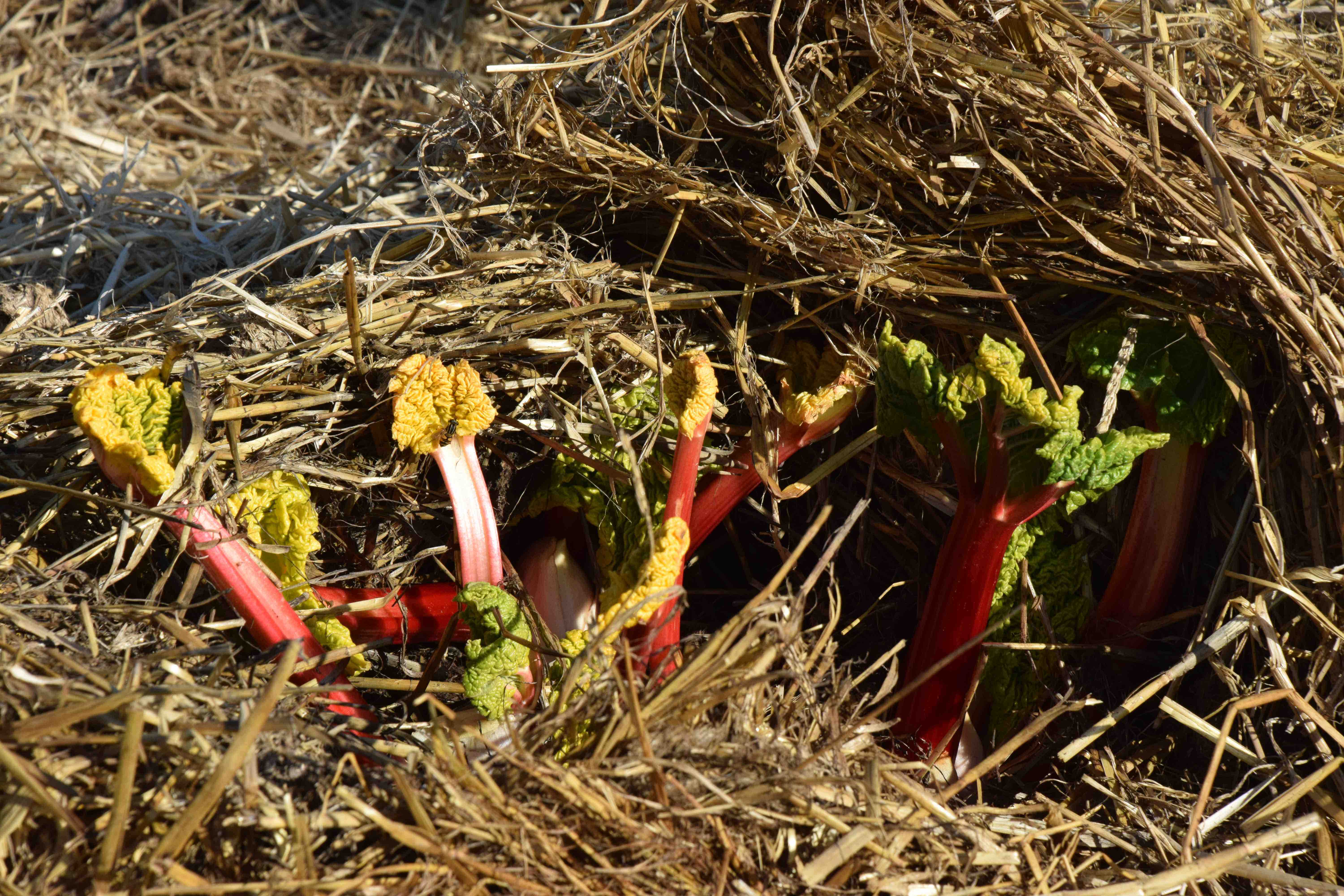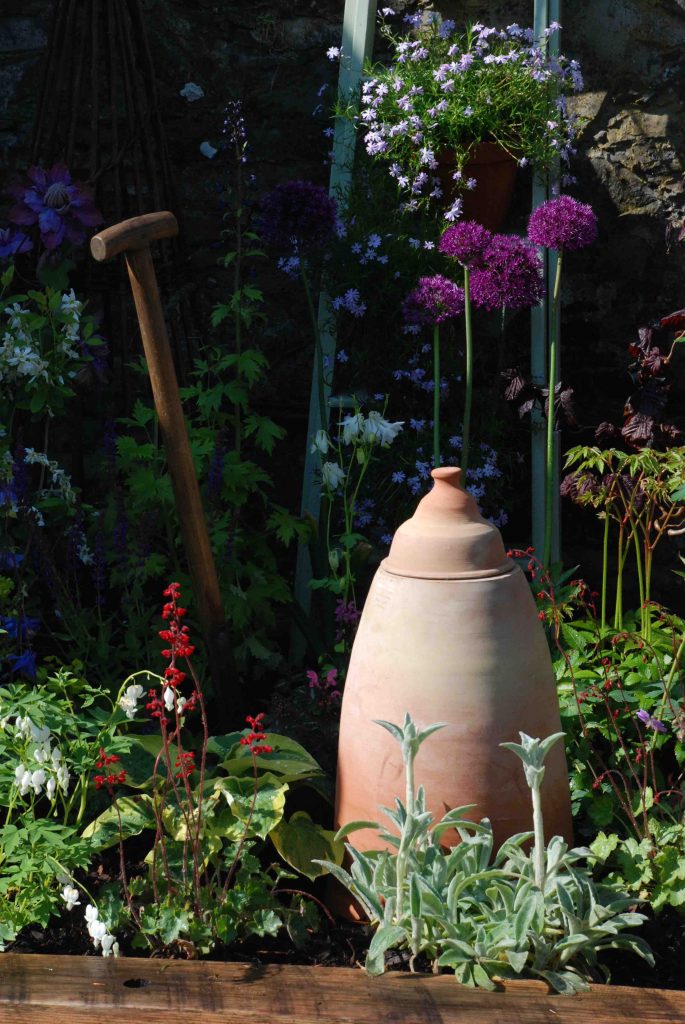
Rhubarb is one of the simplest home-grown crops. A clump should remain productive for up to a decade and can be relied on to produce tasty crops every year. Rhubarb is hardy and will grow in most soils, provided the soil is not waterlogged in winter or too dry in summer. But rhubarb does appreciate a decent spot with sun most of the day and prefers a rich soil. When asked if I put custard or cream on my rhubarb I always reply that I put manure on mine!
You may be lucky enough to have inherited a clump of rhubarb but if not, now is the perfect time to start your own clump.
Prepare the site well by digging over and getting rid of perennial weeds. Mix in some compost or well-rotted manure. The site should get sun for at least half the day. Each plant will grow to about 1m across so allow plenty of space. You can grow rhubarb in a raised bed. It is possible to grow rhubarb in a pot but it is not ideal. Rhubarb needs lots of water and fertiliser and a potted plant will need lots of water, especially in summer. Rhubarb is a large, leafy plant and needs lots of water. It is possible to keep rhubarb healthy in a pot but you must use John Innes No 3 compost, it will need constant attention and the crops will be light.
Planting rhubarb
Once the site is ready you need to get your plant. There are lots of varieties and they all have their merits but I like bright red stalks. You can buy rhubarb as potted plants or as bare roots in hanging packs. Buy these packs early because the roots do not like to dry out. You can also grow from seed but this is not my favourite way: varieties do not breed true from seed and you will not be able to pull any stalks for eating for two years. You also will get lots of seeds in a packet and we don’t generally need more than a few plants. So I prefer to buy named varieties that I know will perform well and go for quality over quantity.
Rhubarb is a long-term crop. When we pull the stalks we reduce the leaf area of the plant and that weakens it. So never pull any stalks the first year after planting, so the plant can get established and become strong. We also stop harvesting in July. This is so the later foliage is left intact to feed the plant. Old stalks are also more fibrous and may contain more oxalic acid – the substance that makes the leaves inedible. I don’t need to pull rhubarb after June because, by then, there are lots more fruits coming into season: I don’t want rhubarb when I can have strawberries!
Rhubarb, in my opinion, is most valuable in spring, when other fresh fruits are uncommon. As we are all more aware of eating sustainably, rhubarb is finding its place in our diets again. Rather than extend the rhubarb season into summer, I value early rhubarb. This is achieved by ‘forcing’.

Forcing rhubarb
There are two ways to force rhubarb, which just means making plants come into growth early, usually in the dark. The heat and darkness produces stalks and leaves without green pigment and because they grow fast the stalks are less acid and fibrous.
The simplest way is to cover the clump with a large, upturned pot, or rhubarb forcer. If possible, surround the pot with some fresh manure which will produce some heat to encourage growth. You will get an early, very tasty crop. The growth often starts to lift the pot and, once you have pulled most of the stalks you need to remove the pot and allow normal growth. Ideally do not force the same plant every year but, if you do not strip the plant of leaves it can be done.
A more complicated way is to dig up the clump (crown) and put it into a large pot and keep it in a warm shed. You need to take care with watering and with pests like slugs, which will attack the very soft new growth. You can replant the crown after forcing but it will need a year to recover and should not be harvested the following year.
If you already have an old clump, now is also the perfect time to lift and divide and then replant the crowns. The roots are thick and woody so this is not a quick job but it is a good way to increase a good variety and renew old plants.
Later, in summer, rhubarb often produces thick, rounded stems that are flower stalks. These should be snapped off as soon as they are seen because flowering will reduce the vigour of the clumps.
Weekly jobs
It is the ideal time to plant tree and bare-root fruit trees and hedges.
Continue with winter digging so that frost can break up the clods
The recent cold weather means that feeding the birds is more important than ever. Clean feeders once a week. Choose high-energy and no-waste feeds to avoid encouraging vermin. Provide a range of feeds and feeders to encourage a wide range of birds. Don’t forget to provide water too, especially important in freezing weather.